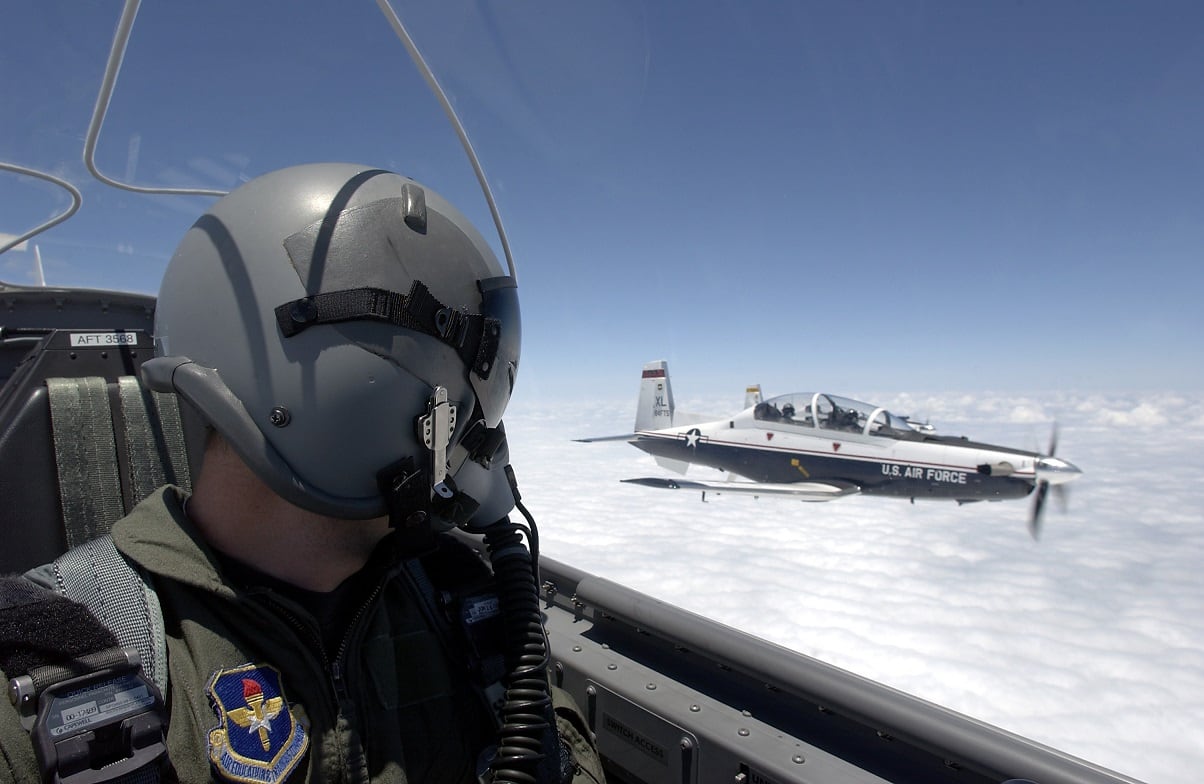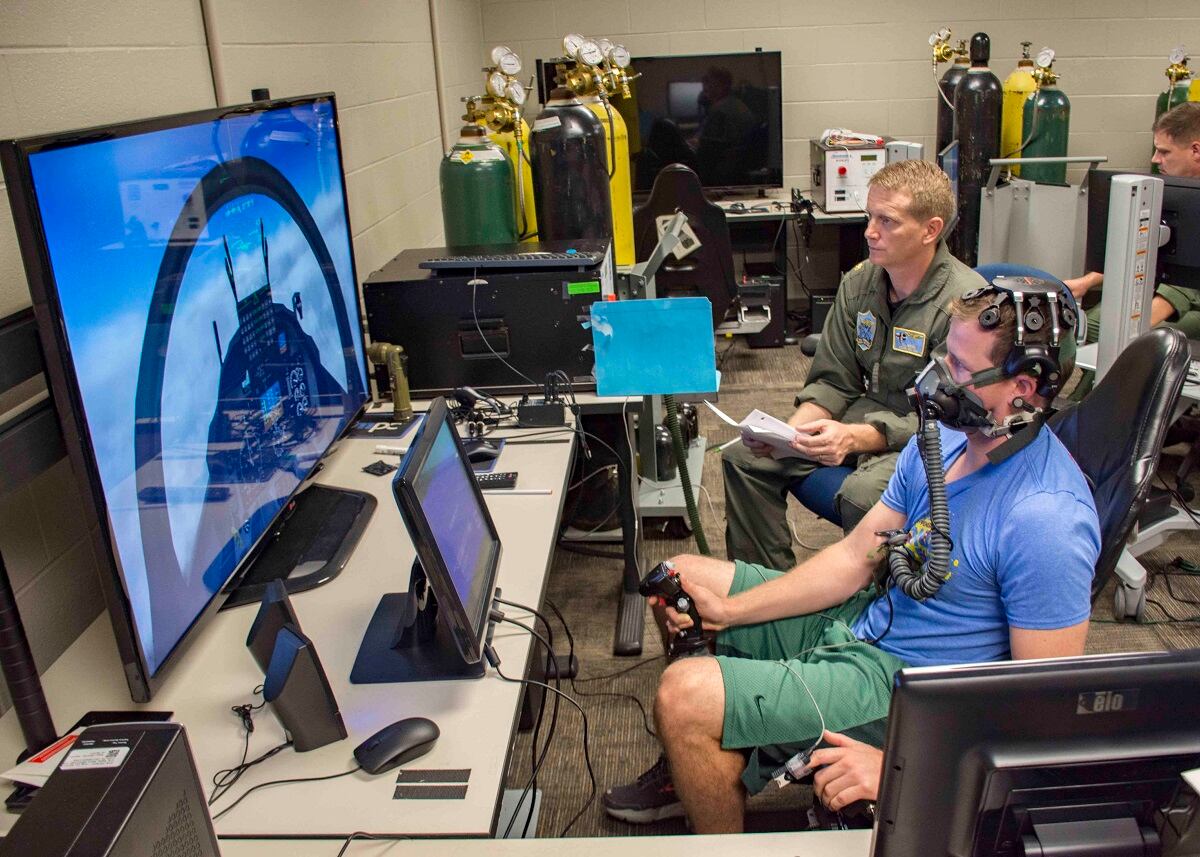WASHINGTON — The U.S. Navy and Air Force still don’t know what is causing an influx of physiological episodes impacting pilots of tactical aircraft like the F-35 and F/A-18 Hornet, but House lawmakers are dealing with it in a characteristically congressional fashion: by ordering studies and throwing money at the problem.
Over the past two years, pilots have reported a growing number of physiological episodes, or PE for short, in planes such as the Air Force’s F-35A and T-6 trainer, as well as the Navy’s F/A-18 Hornet and the T-45 training jet.
The symptoms — shortness of breath and disorientation — are similar throughout the cases but could actually be signs of different conditions including hypoxia, also known as oxygen deficiency; or hypocapnia and hypercapnia, which is when carbon dioxide levels in the blood reach abnormally low and high levels, respectively.
On May 10, the House Armed Services Committee put forward its version of the fiscal 2019 defense policy bill, which includes additional funding and language to help fix the PE problem.
But finding a solution has proven to be a difficult endeavor.
RELATED

Despite several years of investigative work by both services, there seems to be no smoking gun causing the PEs, so the services have responded by making targeted modifications to impacted aircraft. For instance, the Air Force intends to upgrade the T-6’s onboard oxygen-generating system with a more effective condenser starting this October, Air Force Materiel Command head Gen. Ellen Pawlikowski said May 15.
However, it’s possible some cases are psychological, not technical.
“The whole unexplained physiological event is a complex challenge because of the fact that an integral part of this is our human bodies,” Pawlikowski said.
“If there’s any system that has that key interface between the human and the machine, it’s the air-breathing system. So anytime we get into one of these, we have the challenge of understanding the human performance versus what the machine is producing.”
Here’s a rundown of what HASC wants to do to get to the bottom of the PE issue:
- Add $10 million to accelerate the development of technologies that could identify or mitigate PEs.
- On all contracts for new fighter, attack or training jets, require Air Force and Navy secretaries to certify that new aircraft will come equipped with the latest equipment available to allay PEs.
- Modify F/A-18s with a host of new or updated devices, such as a new cockpit altimeter, upgraded onboard oxygen-generation system, redesigned life support systems, improved physiological monitoring and alert systems, and installation of an automatic ground collision and avoidance system. The Navy secretary must submit a report to Congress by February 2019 on its progress toward making these upgrades.
- Require the Navy to submit a report on modifications to the T-45 and its ground equipment made since 2017 to help ameliorate PEs. The service, in its assessment, should also indicate the cost of the upgrades and whether they were successful in addressing the problem.
- Call for a similar report from the Air Force on its efforts to address physiological episodes in F-35s, T-6s or any other tactical aircraft impacted by the issue.
The legislation does give the Navy and Air Force a backdoor that would allow those services to forego the requirements to equip new jets and F/A-18s with PE-mitigating technologies. According to the current language, the service secretary may waive those requirements if it’s determined to be in the service’s best interest, but the secretary must justify the decision to Congress.
Pawlikowski said the Air Force has put its resources in the right places to get after the PE problem. But the service is waiting on test equipment from industry so it can speed up its investigative efforts.
“Some of the things that are slowing us down with respect to the test is just the availability of some of the measurement equipment and the test equipment. It just is a matter of getting industry geared up to build them for us,” she said.
Valerie Insinna is Defense News' air warfare reporter. She previously worked the Navy/congressional beats for Defense Daily, which followed almost three years as a staff writer for National Defense Magazine. Prior to that, she worked as an editorial assistant for the Tokyo Shimbun’s Washington bureau.




